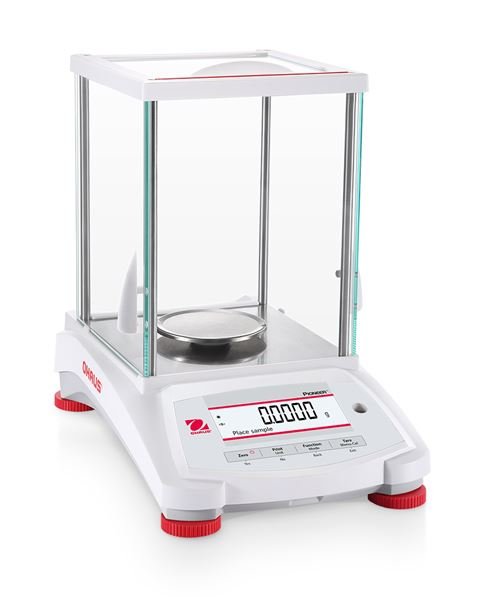Analytical balances are used in laboratories, research facilities, and industrial settings for measuring the mass of substances with a high degree of accuracy and precision. Whether you are purchasing an analytical balance for the first time or looking to upgrade your existing equipment, this comprehensive buyer's guide will help you make an informed decision.
Laboratory balances, are a vital tool in various fields such as chemistry, pharmaceuticals, environmental science, and material testing. They are designed to measure the mass of substances down to the sub-milligram level, making them suitable for applications where even minute variations in mass are critical.
Key Features and Considerations
Capacity and Readability: The capacity of an analytical balance refers to the maximum weight it can measure, while readability is the smallest increment it can display. Balances typically range from 0.1mg to 0.1g capacities with readabilities as low as 0.1 µg. Choose a balance with a capacity slightly higher than your typical sample mass.
Precision: Analytical balances should provide high precision and repeatability. Look for models with built-in features like internal calibration, automatic temperature compensation, and anti-static systems to ensure accurate results.
Calibration and Maintenance: Regular calibration is essential to maintain accuracy. Consider whether the balance offers internal or external calibration options. Some models come with built-in calibration weights and calibration routines for convenience.
Weighing Pans and Draft Shields: The material and design of weighing pans can affect results. Stainless steel pans are common for their corrosion resistance and durability. Draft shields protect the sample from air currents, minimizing measurement errors.
User Interface: An intuitive user interface with a clear display and easy-to-use controls is crucial for efficient operation. Touchscreens, digital keypads, and menu-driven interfaces are common features.
Data Connectivity: Consider if you need data connectivity options such as USB ports, Ethernet connections, or wireless capabilities for data logging and transfer to a computer or LIMS (Laboratory Information Management System).
Space and Location: Analytical balances should be placed on stable, vibration-free surfaces away from direct sunlight and drafts. Ensure you have enough space and appropriate environmental conditions in your lab.
Compliance and Regulations: Depending on your industry, you may need a balance that complies with specific regulations or standards, such as ISO, GLP/GMP, or USP. Verify that the balance meets these requirements.
Price and Budget: Analytical balances vary widely in price, depending on their features and capabilities. Establish a budget and prioritize features that align with your specific needs.
Types of Analytical Balances
There are several types of analytical balances available, each suited to specific applications:
Single Pan Analytical Balances: These are the most common type, suitable for general laboratory work. They have a single pan for placing samples.
Microbalances: Microbalances are ultra-precise, designed for weighing extremely small masses, often down to nanograms. They require a controlled environment and careful handling.
Semi-Microbalances: These offer higher capacities and are used when high precision is required for slightly larger sample sizes.
Top-loading Analytical Balances: These balances have a larger pan and are suitable for weighing larger samples while maintaining high precision.
Moisture Analyzers: Designed for moisture determination, these balances can measure both mass and moisture content in samples.
Density Determination Balances: These specialized balances are used for density determination and typically come with additional features like a density determination kit.
Maintenance and Care
To ensure the longevity and accuracy of your analytical balance, proper maintenance is essential:
Regular Calibration: Schedule regular calibration according to the manufacturer's recommendations. Use certified calibration weights and follow proper calibration procedures.
Cleanliness: Keep the balance clean by wiping down the weighing pan and draft shield regularly. Avoid spilling chemicals or substances on the balance.
Leveling: Ensure the balance is on a stable surface and level it using built-in leveling feet.
Environment: Maintain a stable environment with consistent temperature and humidity levels. Avoid drafts, vibrations, and direct sunlight.
Handling: Handle samples and calibration weights with care to prevent contamination or damage to the balance.
Service and Repairs: If issues arise, contact the manufacturer or an authorized service provider for repairs and maintenance.
Conclusion
Choosing the right analytical balance can be a bit overwhelming at first, but this guide should help with choosing which is right for you. Consider your specific requirements in terms of capacity, readability, precision, and features. Factor in your budget and any industry regulations that apply. Regular maintenance and proper care will ensure the longevity and accuracy of your analytical balance, making it a valuable asset in your scientific endeavors.
American Scale is your source for industrial scales. Be sure to check out our Learning Hub for in depth articles tackling multiple topics. From scale service and maintenance, to learning how to pick the right scale for you. American Scale has you covered.

